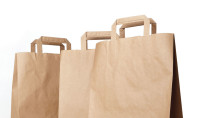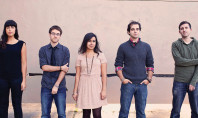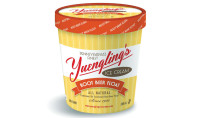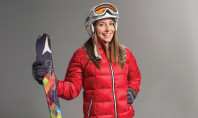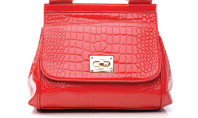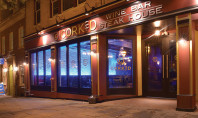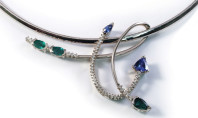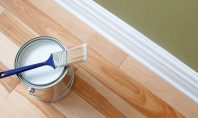Dashing Through The Snow
By Angela Bristow
Whether you are still young, or young at heart, sledding conjures up images of gliding down a snow-covered hill at top speed holding on for dear life, enjoying the ride for every inch that the sled will go – dreading the walk back up the hill afterward. Practically every child runs to the window when the white stuff starts falling. Children can hardly wait for the snow to accumulate before they drag out their sled or toboggan.
Sledding Story
Pennsylvania has early roots in sledding. The Standard Novelty Works in Duncannon and the S. L. Allen & Company in Philadelphia were not only forerunners (pun intended) in the manufacture of sleds, but also had longevity in the industry.
Standard Novelty Works made Lightning Guider sleds from 1904 to 1988. Producing between 1,600 and 1,800 sleds per day in 1920, it held the record for producing more children’s sleds than any other United States manufacturer that year.
S. L. Allen & Company was started by Samuel Leeds Allen and began selling its Flexible Flyer line of sleds in 1889. Credited with being the first steerable sled, it was a few years before the sled was marketable to the middle class. The first prototype, the Fairy Coaster, sold for the prohibitive amount of $50, the amount equal to the price of 165 acres in Perry County, and was constructed of double steel runners and an upholstered seat capable of holding four adults. To make a sled that would appeal to the average person, Allen developed the Flexible Flyer that had runners made of a more bendable metal that allowed for steering and a slatted wooden seat that made it lighter for carrying.
S. L. Allen & Company’s roots in farm machinery production are clearly seen in early advertising materials for the Flexible Flyer: “… the ‘Flexible Flyer’ has spring steel flexible runners, controlled by a capital steering bar convenient for hands or feet. Ordinary sleds are steered by digging in the heels or dragging the foot… these things hold the sled back. The foot is like a dragging anchor, the sled is like a plow.” The same brochure says, “Tell the boys that the ‘Flexible Flyer’ beats any other sled on the hill.” The new design and advertising strategy worked. In 1899, Wanamaker’s in Philadelphia and Macy’s in New York began selling “Boys’ Flexible Flyers” for $1.99, increasing the seasonal demand to 120,000 within 10 years.
For many decades the sledding industry boomed, with Standard Novelty Works and other manufacturers doing well, also. In the late 1970s, both aforementioned companies were still having good sales; but sadly, a decade or two later the manufacture of children’s sleds went out of state and then out of the country.
Sledding Spots
Take a look on area hills and in public parks after a winter snow and you’re sure to find children on their sleds or toboggans. According to Randy Cope, recreation program manager for the Allentown Parks Office, individuals show up at the following Allentown parks for sledding: near the Robinhood Bridge in the Lehigh Parkway, the Cedar Crest College hill in Cedar Creek Parkway, near the skate park in Keck Park, and next to the baseball field in Alton Park. While there aren’t additional park rules specific to sledding, Cope urges all to be respectful of other sledders when using the city’s parks.
Bethlehem Parks and Public Property Department’s Recreation Coordinator Mark Atkinson says that probably Bethlehem’s most popular sledding hill is behind the Earl E. Schaffer Municipal Ice Rink between the rink and Memorial Pool on Illick’s Mill Road.
Director of Parks Robert Stiffler, Lehigh County Parks and Recreation, says that the county doesn’t promote sledding in any of their parks, but “it just kind of happens on its own in our parks. Sledding is not forbidden, but it’s at their own risk. Have fun, but do it responsibly.”
Sledding Safety
Because safety is a real issue when it comes to sledding, Adam Colombo, D.O., emergency room physician for St. Luke’s University Health Network in Bethlehem says: “The biggest thing is to make sure you are using the right equipment in the right place.” The most common injury-causing scenario is an individual sledding in area where they shouldn’t be and he or she ends up sliding into traffic or hitting trees and rocks. To ensure that everybody has a fun time sledding, it is advisable that a responsible adult check the slope and equipment before it is used.
Dr. Colombo said the second most common safety problem is the use of improvised sleds such as cafeteria trays and sheets of plastic. He says even inner tubes aren’t as safe as a steerable sled. Riders can’t steer and can easily be turned backwards not seeing an impending collision, often resulting in a head or neck injury. Also, when an inner tube hits a bump the tube compresses and often throws the rider from the tube resulting again in possible injury.
Dr. Colombo and Stiffler both strongly recommend that sledders make sure they have a sufficient stopping area that is free of trees or other hazards.
In addition to only riding on a steerable sled, snow sledding equipment for younger children should also include a helmet. “They are advised for bikes and skiing, it is no different getting on a sled and going down a slope,” says Dr. Colombo.
Younger children should not walk home alone if they’ve experienced a head injury. While children are sometimes hesitant to tell their parents that they’ve been injured sledding, parents should stress to their children that it is important that they tell them if they’ve had a head injury. The child should be examined or at least monitored for further complications. Dr. Colombo says that if there’s ever a doubt about a head injury, or the person doesn’t know how bad the injury is, it is always good to get professionally evaluated.
“In my opinion, the second most common injury is lacerations,” says Dr. Colombo. Cuts can easily occur from contact with icy slopes and sharp parts of a sled. He advises being properly covered by wearing gloves, coat, etc. – not just a t-shirt and shorts because you figured it’s a nice sunny day. This may seem obvious, but each year doctors see people come into the emergency room with injuries because they’re wearing summer attire for sledding.
Dr. Colombo says the hospital also sees many patients affected by snow-tubing accidents from the mountain resorts. He offers these suggestions. Do not try to pile people on a sledding device that’s not made for multiple riders. Adding mass to acceleration is a recipe for injuries. Sledding and alcohol don’t mix. When children are old enough to be out sledding together without adult supervision, remind them that if one of them sustains a significant head or neck injury it is best to call 911. Moving an injured person inappropriately can cause additional injuries.
So, be safe, but have fun this winter. If you’re an adult, dust off that Flexible Flyer in your garage and enjoy this winter pastime with your kids.

